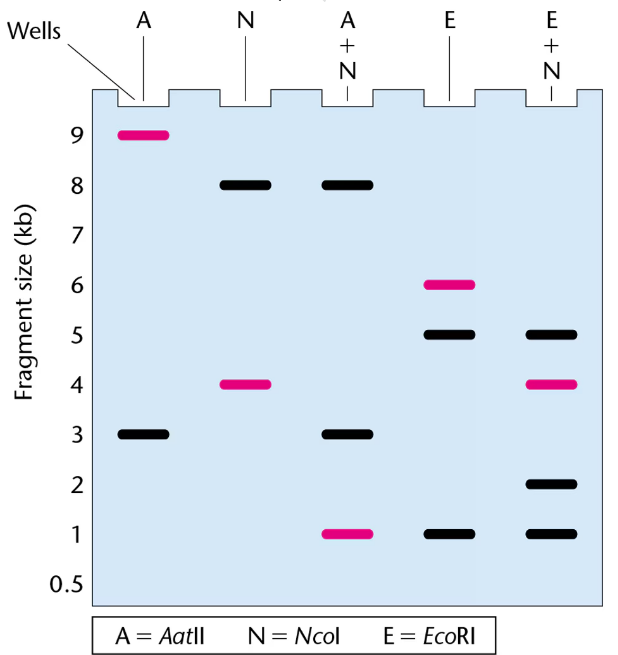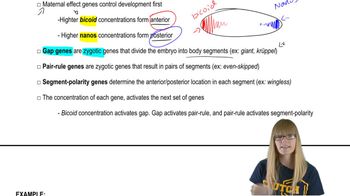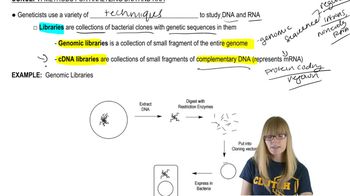Two complaints about some transgenic plants presently in commercial use are that (1) the Bt toxin gene is constitutively expressed in them, leading to fears that selection pressures will cause insects to evolve resistance to the toxin, and (2) a selectable marker gene—for example, conferring kanamycin resistance—remains in the plant, leading to concerns about increased antibiotic resistance in organisms in the wild. How would you generate transgenic plants that produce Bt only in response to being fed upon by insects and without the selectable marker?
Table of contents
- 1. Introduction to Genetics51m
- 2. Mendel's Laws of Inheritance3h 37m
- 3. Extensions to Mendelian Inheritance2h 41m
- 4. Genetic Mapping and Linkage2h 28m
- 5. Genetics of Bacteria and Viruses1h 21m
- 6. Chromosomal Variation1h 48m
- 7. DNA and Chromosome Structure56m
- 8. DNA Replication1h 10m
- 9. Mitosis and Meiosis1h 34m
- 10. Transcription1h 0m
- 11. Translation58m
- 12. Gene Regulation in Prokaryotes1h 19m
- 13. Gene Regulation in Eukaryotes44m
- 14. Genetic Control of Development44m
- 15. Genomes and Genomics1h 50m
- 16. Transposable Elements47m
- 17. Mutation, Repair, and Recombination1h 6m
- 18. Molecular Genetic Tools19m
- 19. Cancer Genetics29m
- 20. Quantitative Genetics1h 26m
- 21. Population Genetics50m
- 22. Evolutionary Genetics29m
18. Molecular Genetic Tools
Genetic Cloning
Problem 29b
Textbook Question
The gel presented here shows the pattern of bands of fragments produced with several restriction enzymes. The enzymes used are identified above the lanes of the gel, and six possible restriction maps are shown in the column to the right.
One of the six restriction maps shown is consistent with the pattern of bands shown in the gel.
The highlighted bands (magenta) in the gel were hybridized with a probe for the gene pep during a Southern blot. Where in the gel is the pep gene located?

 Verified step by step guidance
Verified step by step guidance1
Step 1: Understand the experimental setup by reviewing how restriction enzymes cut DNA at specific sequences, producing fragments of varying lengths that appear as bands on a gel after electrophoresis.
Step 2: Examine the gel lanes corresponding to each restriction enzyme and note the sizes and number of bands produced, paying special attention to the magenta-highlighted bands that hybridized with the pep gene probe during the Southern blot.
Step 3: Compare the observed band patterns for each enzyme with the six possible restriction maps provided, focusing on which map's predicted fragment sizes and arrangement match the gel's band pattern, especially the bands that hybridize with the pep probe.
Step 4: Identify the fragment(s) in the gel where the pep gene is located by matching the hybridized bands to the corresponding fragment(s) in the restriction map that contains the pep gene sequence.
Step 5: Conclude the location of the pep gene on the restriction map by correlating the hybridized band sizes with the fragment sizes in the map, confirming which restriction map is consistent with the gel pattern and the Southern blot results.
 Verified video answer for a similar problem:
Verified video answer for a similar problem:This video solution was recommended by our tutors as helpful for the problem above
Video duration:
32sPlay a video:
Was this helpful?
Key Concepts
Here are the essential concepts you must grasp in order to answer the question correctly.
Restriction Enzymes and DNA Fragmentation
Restriction enzymes cut DNA at specific sequences, producing fragments of varying lengths. When DNA is digested with different enzymes, the pattern of fragments reflects the locations of their recognition sites. Understanding how these enzymes work is essential to interpret gel band patterns and map DNA.
Recommended video:
Guided course

Steps to DNA Replication
Gel Electrophoresis and Band Patterns
Gel electrophoresis separates DNA fragments by size, with smaller fragments migrating farther through the gel. The resulting band pattern represents the sizes of DNA pieces after enzyme digestion. Comparing band patterns across lanes helps identify which restriction map matches the observed data.
Recommended video:
Guided course

Segmentation Genes
Southern Blotting and DNA Probes
Southern blotting transfers DNA fragments from a gel to a membrane, where a labeled probe hybridizes to a specific gene sequence. The location of the probe signal on the gel indicates which fragment contains the gene of interest, allowing identification of the gene's position within the restriction map.
Recommended video:
Guided course

Methods for Analyzing DNA and RNA
Related Videos
Related Practice
Textbook Question
365
views


